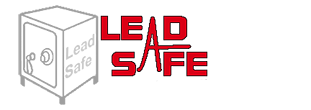How do I prepare for a lead paint inspection:
Rhode Island is considered a Lead Safe state, not a Lead free state. Because of this, we are not required to do a full Comprehensive inspection on each dwelling unit. Comprehensives are where we would test every painted surface in your unit to determine whether or not lead is present and at what concentration. These inspections are very labor intensive and time consuming, and consequently, quite expensive. The solution to make lead compliance more financially reasonable for landlords is the Lead Hazard mitigation Inspection which produces a Certificate of Conformance.
- The Lead Hazard Mitigation Inspection is largely visual, which is why it needs to be renewed every two years. Lead is safe in the home as long as it is intact and encapsulated so when we perform a lead hazard mitigation inspection we are not actually testing to see if any of your surfaces do or do not have lead paint- we are instead assuming all painted surfaces are positive for lead and performing a visual inspection to confirm that they are ‘conditionally safe’ due to their condition. With that said, we are not able to take into account the age of the substrate, how many layers of paint there are between old lead paint and more modern paint, etc. ALL SURFACES IN THE UNIT MUST BE IN TACT AND ENCAPSULATED WITH NO SIGNS OF DETERIORATION IN ORDER TO PASS A LEAD HAZARD MITIGATION
INSPECTION. We also will look for friction surfaces which are areas where paint can be easily deteriorated due to wear and tear such as doors that bind, old wood rope and pulley windows or painted stairs without tread covers. All of these risk factors need to be addressed before a Certificate of Conformance can be issued. Below you will find our pre inspection checklist which goes over in detail all of the things that our inspectors will be looking for during the inspection. Please note that these guidelines are strict and if you have a question about whether or not something will be a problem, it probably will be. When in doubt, it is best to address it before the inspection.

